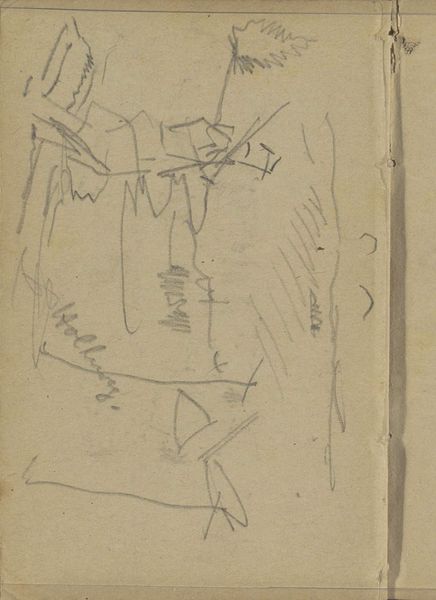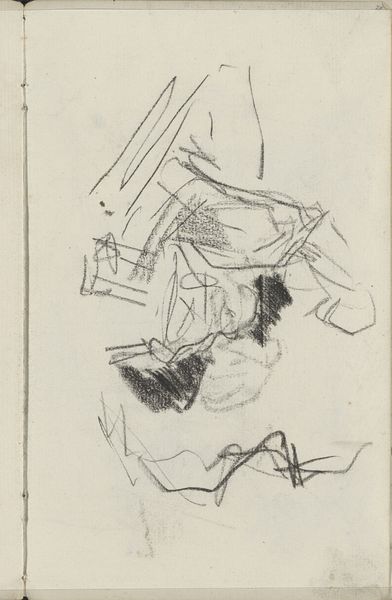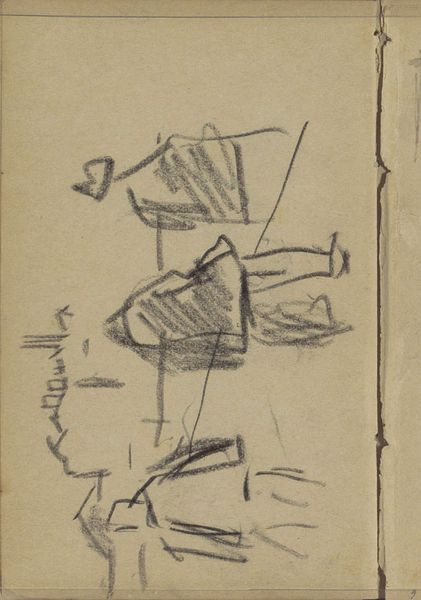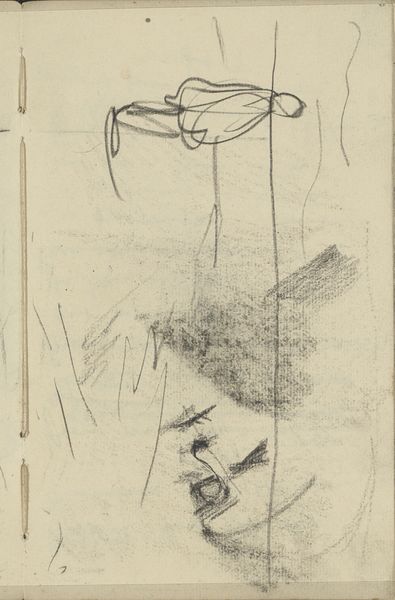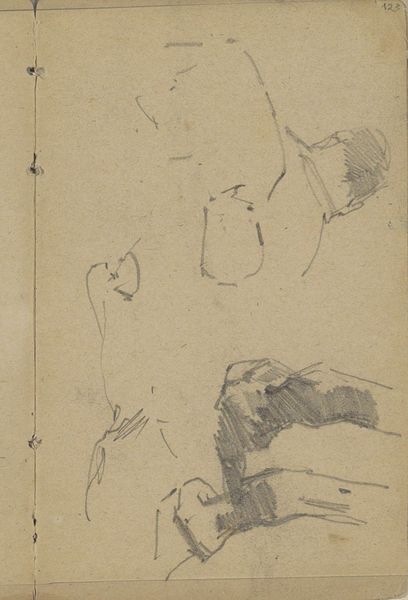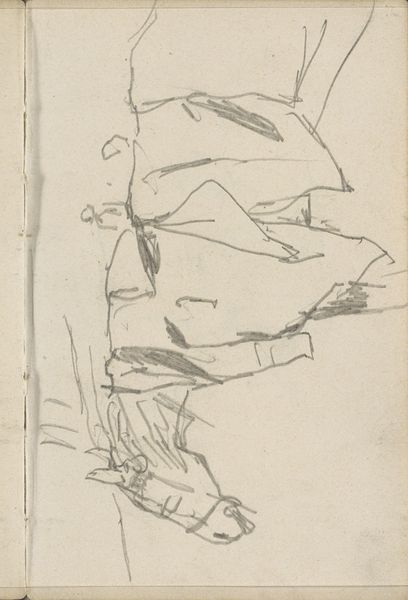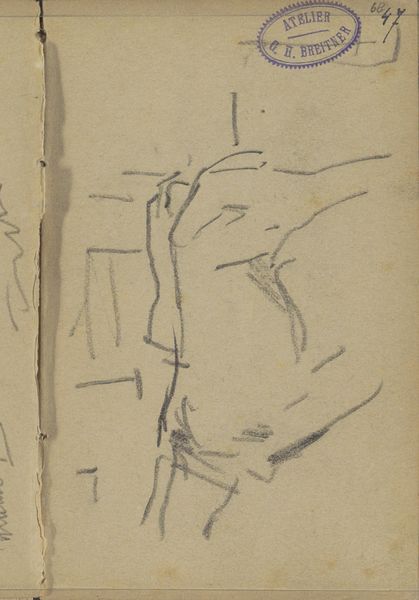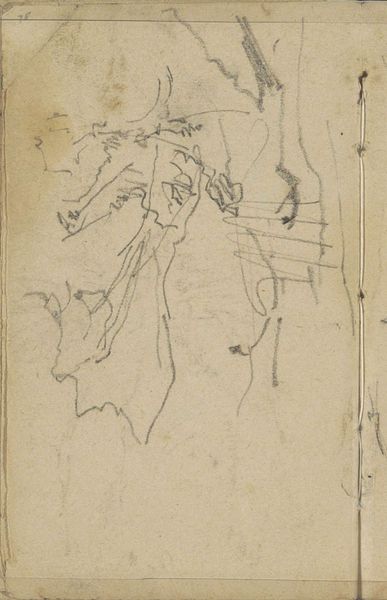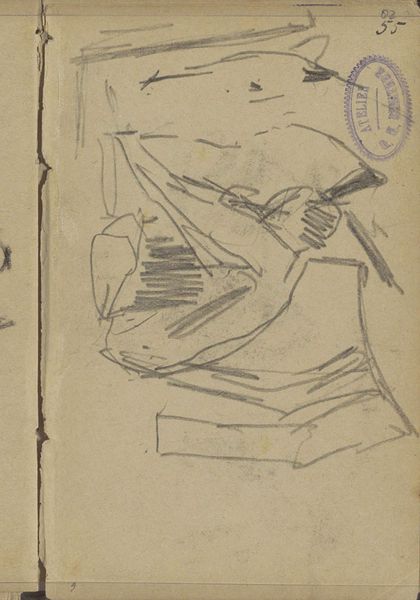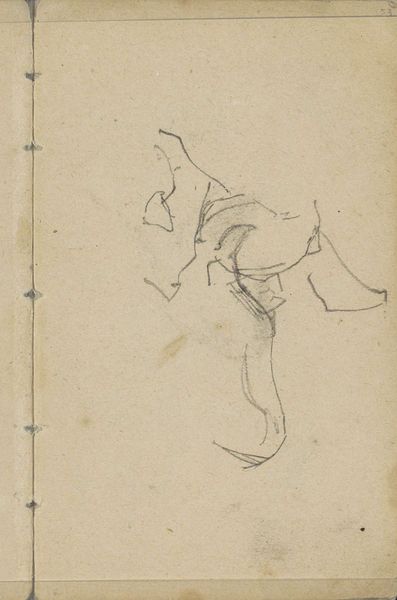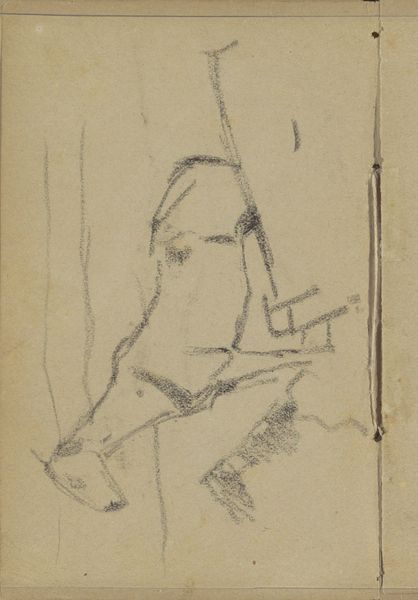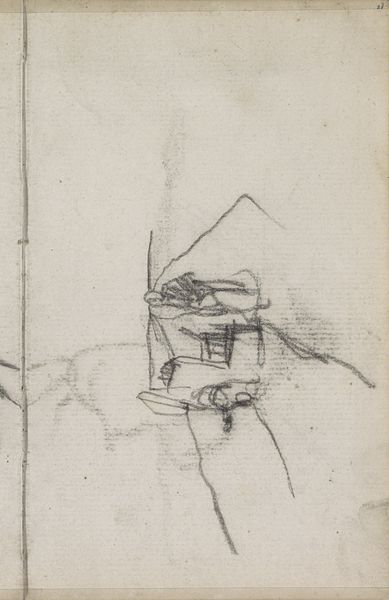
drawing, paper, pencil
#
drawing
#
amateur sketch
#
toned paper
#
light pencil work
#
quirky sketch
#
impressionism
#
sketch book
#
figuration
#
paper
#
personal sketchbook
#
idea generation sketch
#
sketchwork
#
pencil
#
line
#
sketchbook drawing
#
sketchbook art
Copyright: Rijks Museum: Open Domain
Curator: This is "Studie, mogelijk van een wijdbeens staande man," a pencil drawing on paper by George Hendrik Breitner, dating from 1881-1883. It resides here at the Rijksmuseum. Editor: Thanks! It's so fleeting, like a quick observation jotted down. All those swift pencil lines – what stands out to you? Curator: For me, the immediacy of the sketch underscores the working processes of late 19th-century artists. Pencil on paper: basic, cheap, easily accessible materials. But consider the labour – the hours spent training the eye and hand to capture form with such economy. It challenges our assumptions about "high art" doesn’t it? Is this “lesser” art simply because it's a sketch, using modest materials? Editor: Interesting. It feels so preliminary, I suppose I assumed it had less…value than a finished painting. Curator: Value is interesting, isn't it? How do we ascribe value? The finished painting – with expensive oils, carefully prepared canvas – caters to a certain market, a system of patronage and display. This sketch, though, provides access to the *making* of art. The rapid lines show the artist thinking, almost viscerally. Consider where the paper came from; consider the lead, mined and processed, for the pencil. Editor: So you're seeing the materials themselves as crucial, pointing towards the means of production? Curator: Absolutely! Breitner was part of a shift, a generation wrestling with industrialization, mass production. This sketch might seem slight, but it reveals anxieties about art’s place in a rapidly changing world, a world flooded with cheap reproductions. Is this “lesser art”? No - it asks different questions. What are YOUR thoughts? Editor: That really opens it up! I never considered how much the materials reveal about artistic labor and social context. Curator: Exactly. Looking at the “stuff” of art helps us dismantle hierarchies and reconsider value. I will definitely have to consider materiality more broadly in the future.
Comments
No comments
Be the first to comment and join the conversation on the ultimate creative platform.
